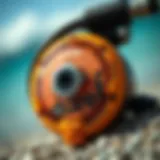The Complete Guide to Naish Kite Pumps and Their Features
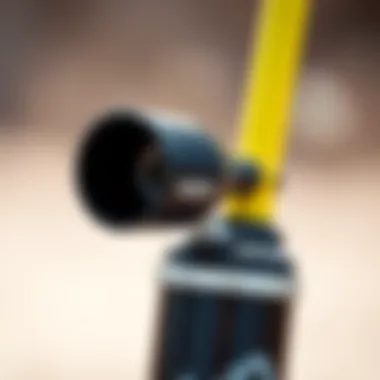
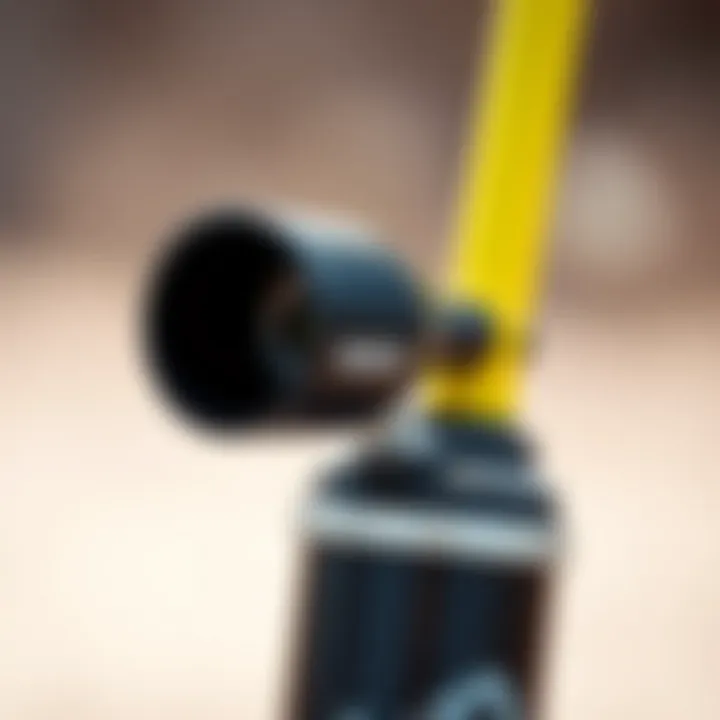
Intro
Kiteboarding is not just a sport; it’s a way of life for many enthusiasts around the world. In the heart of this exhilarating activity lies the essential gear, among which kite pumps play a crucial role in ensuring optimal performance on the water. Among many brands, Naish has carved a niche for itself with its well-engineered kite pumps designed to meet the demands of riders at every skill level. This guide will take a deep dive into Naish kite pumps, dissecting their unique features, available models, maintenance tips, and the experiences of fellow kiteboarders.
Understanding which pump to choose can elevate the kiteboarding experience significantly. When you couple the right pump with the perfect kite and board combination, you're set up for success. With this guide, we aim to provide kiteboarders—from beginners to seasoned pros—with clear insights and information to help them navigate their choices seamlessly. Now, let's get into the nitty-gritty details about gear selection.
Understanding Naish Kite Pumps
In the world of kiteboarding, the equipment we use can often sway the tide between a thrilling ride and a frustrating outing. Understanding Naish kite pumps is crucial as they play a cornerstone role in ensuring a kite is inflated properly, impacting performance, safety, and enjoyment. Proper pump usage allows riders to maximize their adventure on the water, and having a solid grasp of Naish's offering can elevate the experience.
History of Naish Equipment
Naish as a brand, founded by legendary kitesurfer Robby Naish, has a storied history in the water sports arena. Their name is synonymous with quality and innovation. From surfboards to kites, Naish continually pushes the envelope. The early days in the 1990s set the stage for what would soon become a global phenomenon. Naish developed their first kites with a focus on performance and durability, understanding that these were essential characteristics that riders value. The company soon began crafting pumps with similar principles, ensuring that each product aligns with the high standards set by their kites.
As the sport evolved, so did Naish's approach to pump design. By listening to feedback from the kiteboarding community, they adapted their products to meet the demands of changing technology and rider preferences. This timeline reflects not just a company's journey but an ongoing commitment to enhancing the kiteboarding experience through reliable inflating solutions.
Importance of Quality Pumps
A quality pump is not merely a tool—it's a lifeline in the sport. The right pump saves time and ensures maximum performance of your kite. If a kite is improperly inflated, even the best rider can feel as though they’re fighting against the wind rather than maneuvering with it. Understanding the importance of this aspect can’t be overstated. Each Naish pump is designed to deliver reliability and efficiency, reducing the time spent inflating and allowing more time on the water.
- Durability: Naish pumps are crafted from materials and processes that withstand harsh elements, whether it's intense sun exposure or sand kicked up by the wind. Durability translates to a longer product life, saving money in the long run.
- Efficiency: Due to advanced designs and mechanisms, Naish pumps inflate kites quicker. This efficiency means a rider can set up without the hassle, allowing for more spontaneous outings.
- Compatibility: Naish has multiple models that cater to different kites, ensuring that regardless of the kite size or design, there's a Naish pump tailored for it.
A pump may seem simple, but it’s a vital component without which the kite experience can become tedious. The right choice in this field can sharpen one’s edge in performance and enjoyment in kiteboarding.
Features of Naish Kite Pumps
The features of Naish kite pumps play a crucial role in the overall kiteboarding experience. A solid pump can be the difference between an exhilarating ride on the water and a frustrating day spent inflating your kite. Understanding these features helps kiteboarders choose the right equipment that aligns with their specific needs and riding styles. Let's dissect three key elements of Naish pumps: design, material quality, and inflation mechanisms.
Pump Design
The design of Naish kite pumps is not merely aesthetic; it directly influences functionality and ease of use. Typically, these pumps sport a streamlined profile that enhances aerodynamic efficiency, ensuring that users can inflate their kites in a swift and hassle-free manner. The ergonomic handles are a vital aspect, providing a comfortable grip that minimizes hand fatigue even under rigorous pumping sessions.
Moreover, one notable feature is the compact size of Naish pumps. Many models are designed to be lightweight and portable, making them easy to transport to the beach. Some even come with a storage compartment for nozzles or straps, keeping everything organized. A well-thought-out design is key to maintaining a smooth workflow before hitting the waves.
Material Quality
When we're talking about materials, Naish doesn't cut corners. The durability of a kite pump is essential, especially considering the rough conditions kiteboarders often face. Naish pumps are typically constructed using high-grade plastics and metals, which not only withstand the elements but also undergo rigorous testing to ensure performance under pressure.
A solid example is the use of reinforced plastics that prevent cracks and wear, significantly extending the pump's lifespan. Furthermore, many Naish pumps use materials that offer some level of UV resistance, safeguarding them from sun damage during hot summer days. This attention to material quality ultimately contributes to a consistent inflation experience and reduces the risk of equipment failure on crucial days out on the water.
Inflation Mechanism
The inflation mechanism is the heart of any kite pump, and Naish has engineered its models to cater to a variety of user preferences. Different types—such as single action, double action, and electric—meet the demands of both novice and seasoned riders.
A prominent feature is the double action mode offered by some Naish pumps. This feature allows air to be pushed into the kite during both the upstroke and downstroke, effectively doubling the amount of air pumped with each motion. Riders often appreciate this feature when in a hurry to get on the water.
Additionally, Naish pumps come with various nozzle attachments that ensure compatibility with a plethora of kite valves. This versatile design caters to those who own several kites, alleviating the headache of having to switch pumps continuously. As the kites inflate seamlessly, riders can focus more on riding rather than struggling with gear.
"An efficient pump is just as vital as the kite itself. It bridges the gap between dream and reality, allowing riders to seize the day with confidence." - Expert Kiteboarder
In summary, understanding these features in depth allows kiteboarders to assess their equipment better. With a nuanced appreciation of design, material quality, and inflation mechanisms, riders can choose the right Naish pump to elevate their kiteboarding experience.
Types of Naish Kite Pumps
In the world of kiteboarding, choosing the right gear can make or break your experience out on the water. Naish kite pumps come in various types, each with unique benefits and specific use cases. Understanding these types not only enhances your riding experience but also ensures that you select a pump that fits your needs perfectly. Here’s a closer look at the main types of Naish kite pumps available:
Single Action Pumps
Single action pumps are the traditional workhorses of the pumping world. They allow air to flow into the kite with every upward stroke, but not during the downward one. You might wonder why anyone would choose this option, especially when quicker inflation sounds appealing. Well, this pump builds pressure steadily, making it a solid choice for riders who appreciate a good workout alongside their kite setup.
When you're pumping up your kite, every pull upwards counts. This type is more efficient for those who don’t mind putting in some muscle. The single action pump's lightweight design also makes it convenient for travelers. You won't find it bulky or awkward to carry around.
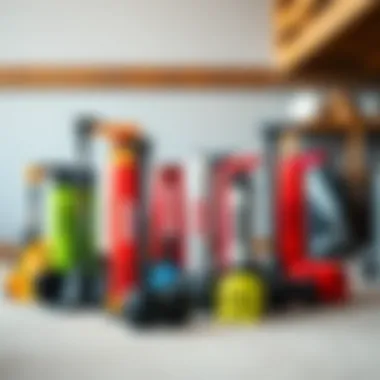
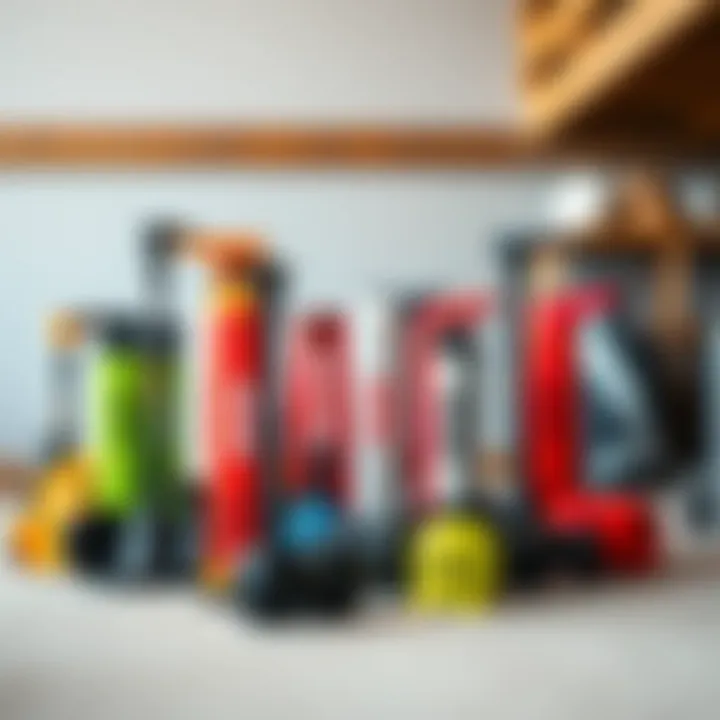
Advantages of single action pumps:
- Portability: Lightweight and easy to pack.
- Simplicity: Fewer moving parts means less chance for issues.
- Pressure Control: You can easily gauge the amount of air added with each stroke.
Double Action Pumps
Now, if you're someone who values speed and efficiency, double action pumps are probably what you’re looking for. Unlike their single action counterparts, double action pumps inflate the kite on both the up and down strokes. This provides a quicker inflation process and can save you precious time, especially when you're eager to get in the water.
These pumps are generally a bit bulkier due to the dual-action design, but many users would argue it's worth it for the time saved during setup. Plus, they often come equipped with pressure gauges to help you get that kite perfectly filled, so you can pop right into action.
Key benefits include:
- Fast Inflation: Great for windy days when you don’t want to miss out on the best conditions.
- Pressure Accuracy: Some models include built-in gauges for precise control.
- User-Friendly: The efficiency of this pump makes it easy even for beginners.
Electric Pumps
If you want to be in and out of a kite setup with minimal hassle, electric pumps are hard to beat. These pumps do the hard work for you, often just needing a small amount of setup before they work their magic. Especially for those who might struggle with manual pumps, electric pumps are a game-changer. With the push of a button, you can see your kite fully inflated in no time.
They are particularly popular among kiteboarders who frequently hit the beach with large kites or those with physical limitations that make manual pumping difficult. However, they do require a power source, either from a car's battery or a portable power bank, which can be a consideration when you're out on the beach.
Consider these points:
- Convenience: Automated process takes the physical strain out of inflating.
- Speed: Fast filling means more time on the water.
- Adaptable: Some models work with multiple kites and provide varying inflation pressures.
"Each type of Naish pump offers unique benefits depending on your personal style and riding preferences—choose wisely!"
Overall, having the right type of pump cannot be overemphasized. It’s an essential part of your kiteboarding kit that directly affects how quickly and effectively you can get into riding. Knowing your options helps you pick the right tool for each session—whether that’s a robust single action, a quick double action, or an efficient electric pump.
Using Naish Kite Pumps Effectively
Using Naish kite pumps effectively is crucial for any kiteboarder. A well-inflated kite not only enhances performance but also ensures safety during usage. The right technique can save time, prolong the life of your equipment, and provide a smoother experience on the water. Understanding how to utilize these pumps optimally allows riders to maximize their gear’s potential while also maintaining the kite’s integrity.
Step-by-Step Inflation Process
Inflating your kite properly sets the stage for a fantastic session on the water. Here's a straightforward guide to achieve this:
- Prepare Your Workspace: Choose a clean and flat area to inflate your kite. This prevents debris from getting into the valves.
- Attach the Pump Hose: Make sure the hose fits snugly in the kite's inflation valve. Don’t force it, as this could damage the valve.
- Start Pumping: Use a steady motion while pumping. If you're using a double-action pump, you’ll be pushing air into the kite on both the up and down strokes. Remember, too much air pressure can lead to structural issues.
- Check the Pressure: It’s essential to know when to stop. A good rule of thumb is to keep the pressure just firm enough so the kite shape holds.
- Seal the Valves: Once inflated, make sure to properly seal the valves to prevent air leakage. This step is key to maintaining the kite’s shape and responsiveness.
"Inflating a kite is like tuning a musical instrument; every little adjustment counts for the overall performance."
By following these procedures, you mix knowledge with technique, ensuring optimal performance every time.
Avoiding Common Mistakes
Many riders fall into pitfalls when it comes to using kite pumps. Preventing these errors can greatly enhance your kiteboarding experience:
- Overinflation: Many believe that more air equals better performance. This often backfires. Too much pressure can warp your kite’s structure.
- Neglecting the Material: Using a pump that isn’t appropriate for the material of your kite can lead to tears or stiffness. Always check compatibility.
- Ignoring Valve Maintenance: Valves should be checked regularly. If they aren’t functioning well, air can escape, rendering your hard work useless.
- Pump Storage Problems: Forgetting to store the pump in a proper, dry place can lead to wear and tear. Keeping equipment in top shape is crucial for longevity.
- Rushing the Process: Take your time. A hasty inflation can cause mistakes. Patience is key to a stress-free start.
By recognizing and sidestepping these common mistakes, you set yourself up for a much smoother, more enjoyable kiteboarding experience.
Maintenance and Care for Your Pump
Maintaining your Naish kite pump is essential to ensure its longevity and optimal performance. A well-cared-for pump not only enhances your kiteboarding experience by providing efficient inflation but also saves you from unexpected malfunctions while you're on the water. Just like tuning your board or checking your lines, good maintenance habits can significantly influence your overall enjoyment and safety. Investing a bit of time into understanding proper care methods will yield benefits that echo through your entire kiteboarding journey.
Cleaning Procedures
Regular cleaning is vital to protect against the residue and grime that can build up on your pump. Sand, saltwater, and dirt can lead to wear and tear, complicating the inflation process over time. Here’s a simple, yet effective way to keep your Naish pump in tip-top shape:
- Rinse with Fresh Water: After each use, it's good practice to rinse the pump with fresh water. This helps wash away any salt or sand that might latch onto the pump, preventing corrosion.
- Use a Soft Cloth: Wipe down the body of the pump with a soft, non-abrasive cloth. Avoid harsh chemicals as they can damage the materials.
- Maintain the Hose: Ensure that the inflation hose is clean and free from blockages. A simple check to make sure there are no kinks or dirt inside goes a long way.
- Detachable Parts: If your pump has detachable parts, such as nozzles, rinse these separately to keep them clear of debris.
Following these steps regularly can make a significant difference, ensuring your pump operates smoothly without the struggles of common buildup.
Storage Recommendations
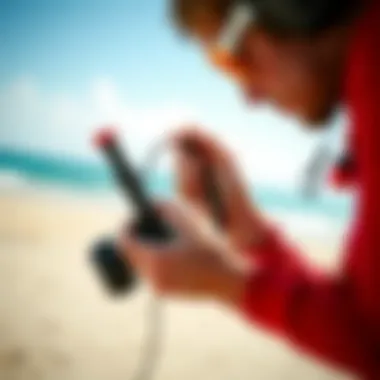
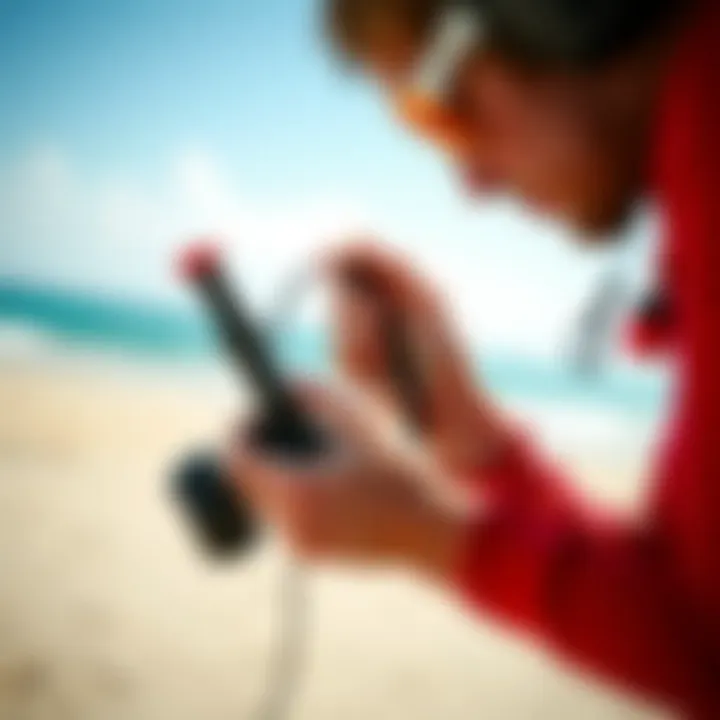
Proper storage is just as critical as cleaning when it comes to the lifespan of your Naish pump. Leaving it exposed to the elements can result in substantial damage. To keep your pump safe and functioning well, consider the following:
- Cool, Dry Place: Store the pump in a cool, dry location away from direct sunlight. Excessive heat can warp parts and lead to failure.
- Protective Cover: Use a protective cover or bag, if available, to shield it from dust and physical damage.
- Avoid Crushing: Make sure it's not placed under heavy items that could crush or damage its structure.
Implementing these straightforward storage suggestions can help avoid unwanted repairs or replacements, essentially prolonging the life of your equipment.
Troubleshooting Common Issues
Even with the best maintenance practices, things can sometimes go awry. Being aware of common issues and their solutions can save you time and headaches:
- Loss of Pressure: If your pump isn’t holding pressure, first check the hose for leaks. A worn-out O-ring can also cause a loss in pressure, so inspect and replace it if needed.
- Clogged Valve: If air isn’t flowing properly, the valve may be clogged. Clearing any dirt or sand from the valve using a small brush can help restore function.
- Stiff Handle: If the handle becomes hard to operate, apply a lubricant to the joints. It’s crucial not to let the handle get too stiff, as this could make pumping more laborious than necessary.
By following these troubleshooting tips, you can ensure that minor annoyances don’t escalate into major problems. Thus, maintaining a functional and reliable pump, ready for your next kiteboarding adventure.
"A stitch in time saves nine." Taking a proactive approach in maintaining your gear will lead to fewer headaches down the line.
Comparing Naish Pumps to Competitors
In the ever-evolving world of kiteboarding, having the right gear can be the difference between a smooth ride and a turbulent experience. When it comes to kite pumps, Naish has established itself as a prominent player. However, understanding how Naish pumps stack up against their competitors is essential for any kiteboarder looking to invest wisely. This comparison sheds light on specific elements such as performance, durability, and price that matter greatly in choosing the right pump.
Performance Analysis
When it comes to performance, Naish kite pumps are often touted for their efficiency and ease of use. Many users report that the double-action pumps inflate their kites quickly and effectively without unnecessary strain. This can be critical in environments where time is of the essence, like competitive events or busy beaches.
In contrast, some competitor pumps may lag, offering a slower inflation rate, which could become a drawback during less forgiving conditions. Consider the following aspects when evaluating performance:
- Inflation Speed: Naish pumps are designed to maximize airflow, allowing for rapid inflation compared to others that might take longer.
- Air Pressure: Consistent air pressure is crucial for kite performance. Naish pumps typically maintain pressure better than many budget alternatives.
- User Comfort: Pump design often affects the user’s comfort level. Naish has implemented ergonomic handles, making the pumping process less taxing on the wrists.
Moreover, many users emphasize their experiences with the durability of the pump's materials, noting how it withstands various weather conditions over time without excessive wear and tear. This performance analysis brings to light the practicality that Naish pumps offer, allowing riders to focus on enjoying the water rather than fussing with their gear.
Price Point Considerations
Price does play an integral role in the decision-making process when it comes to selecting a kite pump. Naish, generally known for its quality, does come with a higher price tag. However, it’s essential to examine whether the cost aligns with the benefits provided. Here are several points to consider:
- Initial Investment vs. Longevity: While Naish pumps might be pricier upfront, many riders find that their durability justifies the expense. Investing in a reliable pump can save money in the long run by negating repeated replacements.
- Value for Performance: It's worth pondering if the enhanced performance metrics—such as faster inflation and superior build quality—make Naish pumps worth the price.
- Comparative Models: Some competitors may offer lower prices, but what does that mean for performance? Cheaper options might save money initially, yet the compromise on efficiency and build may eventually cost more when needing replacements or repairs.
In summary, while evaluating price points, it is beneficial to weigh the value of reliable performance and endurance against initial costs. Those looking to become serious about kiteboarding often find Naish pumps a worthy investment.
"You get what you pay for. When it comes to kite gear, this rings especially true. Investing in quality can lead to a richer experience on the water."
Ultimately, comparing Naish pumps to competitors involves examining performance, longevity, and cost. Every kiteboarder has unique preferences, so weighing these elements can help inform a decision that suits individual needs.
User Experiences with Naish Pumps
When it comes to gear in the kiteboarding world, the user experience can often paint a vivid picture of a product's worth. Naish kite pumps have been part of many riders' journeys, providing not just a way to inflate kites, but also shaping the overall experience on the water. Understanding the testimonies and insights from the kiteboarding community can shed light on what makes these pumps stand out, or not, in the eyes of enthusiasts.
Testimonials from Riders
Riders often express their experiences with Naish pumps in various forums and social media platforms. Across the board, they appreciate aspects such as design efficiency, ease of use, and durability. For example, one user shared on a surfing forum that the Naish "Super Pump" significantly cut down the time spent inflating their kite. They praised its spacious chamber and smooth action, saying, "It’s like a breather for my arms!"
Additionally, many users have noted the stability of the pumps during inflation. This is especially relevant when kiteboarding in gusty winds. One rider recounted how their double action pump remained firmly planted, allowing for quick inflation while managing their kite, ensuring no precious time was wasted. The reliability of the pump in different conditions creates a sense of confidence among users, understanding that they can count on their Naish gear when it matters.
The backpack-style design of Naish pumps also doesn't go unnoticed. Riders are often seen praising the convenience it brings, especially when they’re lugging multiple pieces of equipment to the beach. They highlighted that the pump's lighter weight compared to other brands helps maintain energy levels for those long sessions on the water. This subtle characteristic contributes significantly to the overall experience, ensuring that users aren’t hampered by added bulk.
Expert Opinions
Expert reviews frequently highlight Naish kite pumps for their innovation and quality. According to prominent kiteboarding instructors and gear testers,
"When evaluating any pump, the construction materials and inflation efficiency are paramount. Naish does not skimp on either."
Such opinions communicate the fundamental elements of pump performance that might not be immediately obvious to new kitesurfers.
Experts have noted that the double action feature in many Naish models allows for impressive inflation speeds. One expert described the difference by comparing it to "running a sprint versus a jog." Riders aiming to maximize their time on the water need equipment that responds efficiently. When pumps can inflate kites faster, it leads not only to the possibility of more sessions but ultimately enhances the overall enjoyment.
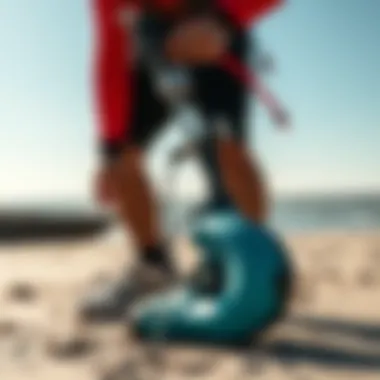
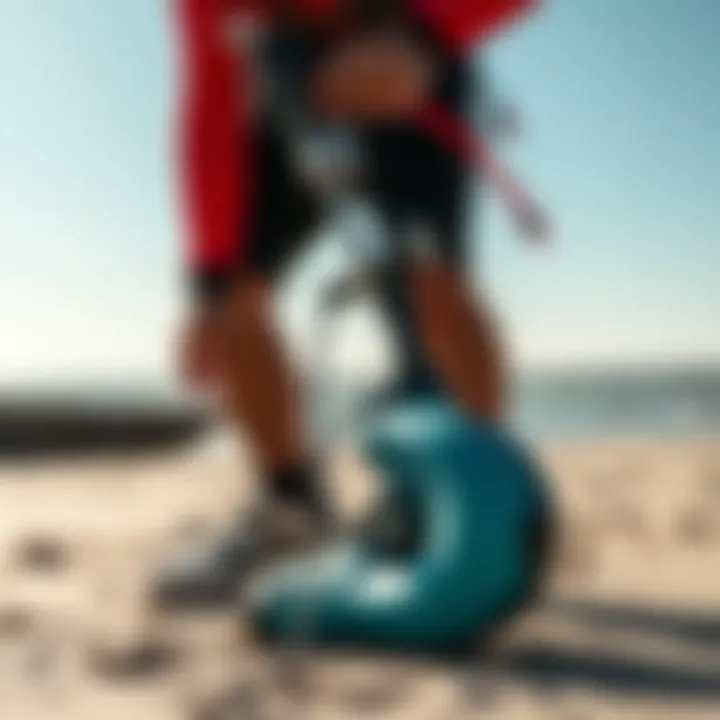
Furthermore, reviews often touch on the long-term reliability of Naish products. Many riders find themselves gravitating to these pumps because of their durability through multiple seasons. An experienced kiteboarding instructor mentioned, "I’ve seen many products fall apart within a year or two, but Naish pumps hold their ground, even in harsh saltwater environments." This speaks volumes to those interested in investing in a pump that won’t need replacement every few months.
When weighing personal experiences with expert analyses, it becomes evident that Naish kite pumps have carved a niche that resonates well with both everyday users and seasoned professionals. The blend of user testimonials and expert opinions showcases that these pumps are not just tools for inflating kites, but critical components that affect the kiteboarding experience in more ways than one.
Best Practices for Choosing a Kite Pump
Choosing the right kite pump is like selecting the perfect partner for a dance—you want a fit that supports your moves and enhances the experience. In kiteboarding, a reliable pump is crucial to inflation efficiency and overall performance on the water. Here, we’ll explore the best approaches to picking a kite pump that meets your specific needs and complements your gear.
Assessing Personal Needs
Every kiteboarder has their own preferences, skill level, and kite size that come into play when selecting a pump. Before diving into the available options, take a moment to consider these critical factors:
- Kite Size: The volume of air needed for proper inflation varies with kite size. A larger kite demands a pump that can deliver more air.
- Portability: If you often travel for kiteboarding, a lightweight and compact pump is advantageous. Look for designs that fold easily or can fit into your gear bag without a fuss.
- Usage Frequency: If you’re out on the water multiple times a week, durability becomes a key factor. A heavy-duty pump may be worthwhile if you're not wanting to replace it yearly.
- Physical Conditioning: Think about your own strength and stamina. If your arms get tired easily, an electric pump can save the day, while seasoned riders may prefer manual options for the satisfaction of doing it themselves.
These considerations shape the foundation for picking the best pump, ensuring you don’t just settle for what works but choose what works best.
Evaluating Specific Models
After establishing your personal requirements, the next step is to compare available models. Each one comes with its unique set of advantages and drawbacks:
- Pumping Mechanism: Consider whether you prefer single-action or double-action pumps. Double-action pumps inflate the kite on both the up and down strokes, reducing your workload significantly.
- Build Quality: Check out the materials used in the pumps. Mechanisms made from high-grade plastics or reinforced components add to longevity. Read reviews from other kiteboarders to see how different models stand up to wear and tear in real-world conditions.
- Special Features: Some pumps come with pressure gauges, which help ensure you're inflating to optimal levels. Others might have customizable nozzles that fit various valve types across kite brands.
- Price vs. Value: It’s all too easy to lean towards the cheapest option, but consider whether the performance justifies the price. A slightly higher investment could mean better reliability and features that enhance your riding experience.
By conducting thorough research and comparisons, you can make an informed decision that aligns perfectly with your kiteboarding lifestyle.
"Ultimately, the best kite pump is the one that fits seamlessly into your riding routine and meets your unique demands as an individual—don’t underestimate the power of a knowledgeable choice."
For further understanding of available options and details, consider visiting kiteboarding community forums such as reddit.com/r/kiteboarding or researching durable gear repositories like kiteboarding.com. These can offer reviews and discussions that help untangle the complexities of selecting the right pump.
Environmental Impact of Kite Pump Materials
The materials used in manufacturing kite pumps, like those from Naish, have a significant impact on our environment. Understanding this aspect becomes crucial as kiteboarding grows in popularity, highlighting the balance between enjoyment and environmental responsibility. Every part of a kite pump—its body, handles, and hoses—can contribute to the broader ecological footprint. In this section, we’ll explore the importance of sustainable practices within the kiteboarding equipment industry, focusing on three key areas: material selection, manufacturing processes, and recyclability.
Sustainability Considerations
When it comes to sustainability, the choice of materials is paramount. Many traditional pumps have components made from synthetic plastics, which can take centuries to decompose. On the flip side, some companies, such as Naish, are beginning to utilize eco-friendly alternatives.
- Biodegradable materials: Some kites utilize biodegradable plastics, which break down after disposal.
- Recycled materials: Utilizing recycled plastics not only reduces the consumption of virgin materials but also diverts waste from landfills.
- Natural fibers: There are advancements in incorporating natural fibers into various parts of pumps, making them more eco-friendly.
Kiteboarders should be encouraged to consider the materials used in their pumps, prompting manufacturers to prioritize sustainability.
Reducing Environmental Footprint
Minimizing their environmental footprint involves more than just material choices; it also encompasses how to properly use and maintain kite pumps. Here are several practices that can help reduce the overall impact:
- Proper usage: Ensuring that pump mechanics are used appropriately can extend the lifespan of the product, reducing waste.
- Maintenance: Regular cleaning and care for pumps will mitigate potential issues, ensuring pumps last longer. It reduces the need for replacements too early in their life cycle.
- Eco-conscious disposal: When a pump reaches the end of its life, recycling components can lead to less waste. Encouraging local recycling can contribute positively to the environment.
- Supporting eco-friendly brands: By choosing to support brands that emphasize sustainability, kiteboarders can help foster an industry standard that prioritizes the environment.
In the next parts of our guide, we will continue to emphasize the importance of mindful equipment choices, incorporating environmentally friendly practices in every aspect of kiteboarding.
Future Innovations in Pump Technology
The world of kiteboarding is no stranger to rapid innovations, and the pumps that inflate kites are no exception. As technology advances, so too does the ambition to refine and enhance the equipment that enables kiteboarders to perform at their best. In this section, we delve into future innovations in pump technology, illuminating the potential shifts that could impact the way we approach kite inflation.
Emerging Trends
Emerging trends in pump technology often mirror broader movements within the kiteboarding community. One notable trend is the integration of smart technology. Imagine pumps equipped with sensors that monitor pressure levels in real-time, allowing riders to optimize their kite's inflation without the hassle of guesswork. These smart pumps could potentially connect to mobile devices, offering tailored suggestions based on the riders' preferences and specific kite models.
Another trend is the development of eco-friendly materials. With growing awareness of environmental impact, manufacturers are churning out pumps made from sustainable resources. These innovations not only cater to the eco-conscious rider but also align with the global push towards reducing plastic waste. For instance, biodegradable composites could become standard, allowing riders to enjoy their sport with less guilt about their environmental footprint.
Furthermore, lightweight designs are trending, aimed at reducing the overall gear load. Innovative materials and engineering techniques could yield pumps that are both compact and efficient. This evolution is particularly favorable for travel enthusiasts who wish to keep their kite equipment as light as possible for easy transportation.
Predictions for New Product Development
Looking ahead, we can anticipate several key predictions regarding product development in kite pump technology. One strong prediction is an increased focus on versatility. Future pumps may offer interchangeable nozzles that can adapt to various kite sizes and valves, streamlining the inflation process. This would eliminate the need for multiple pumps, providing a one-stop solution for all your inflation needs.
Another potential development is the rise of rechargeable electric pumps designed for portability and ease of use. While electric pumps have existed, we might see advancements in battery technology that allow for longer-lasting performance and faster inflation times. These pumps could cater to those who frequent tight settings, where manual pumping could become laborious.
Finally, innovations may include better ergonomic designs, minimizing strain during use. As more people engage in kiteboarding, ensuring ease of use for riders of all ages and abilities will be paramount. Enhanced grips, adjustable heights, or even hands-free operation concepts may be on the horizon.
In closing, the future of kites pumps is ripe with possibilities. Keeping an eye on emerging trends and predictions can aid riders in anticipating the best gear for their kiteboarding adventures. By understanding these shifts in technology, kiteboarders can make informed choices, ensuring they remain at the forefront of the sport.


